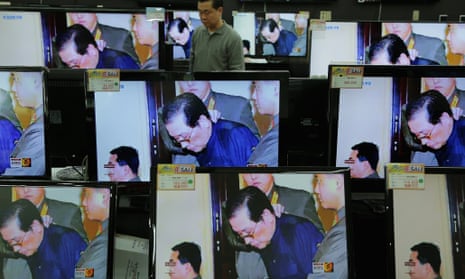Nearly 1,400 North Koreans were publicly executed between 2000 and 2013, according to new research, which suggests that the number of these deaths peaked at 160 in 2009. Further increases after 2013 have also been reported.
The Korean Institute for National Unification, funded by the South Korean government, said in its annual white paper on human rights in North Korea that 1,382 executions took place in public in the 13-year period.
The figures, which cannot be independently verified, were said to be based on in-depth interviews with North Korean defectors and confirmed by witnesses in the country. The number of executions carried out away from the public eye is also impossible to ascertain.
North Korean media have reported only two executions in 2014 and none so far this year, according to Cornell University’s Death Penalty Worldwide research group. During 2009, only one was officially reported.
But the South Korean newspaper Joongang Daily reported in late 2013 that thousands of North Koreans had been forced to attend executions by firing squad held in stadiums, the first known large-scale public executions under Kim Jong-un’s leadership.
Public executions are considered to be a way to keep the population in line. According to witness testimonies from the DPRK, public executions for watching or distributing South Korean films and drug smuggling have increased in recent years, as well sentences for “crimes against the regime”. Many more are punished by being sent to work-camps, with Amnesty International estimating that 200,000 North Koreans are in prison.
North Korea does not allow access to human rights groups, but an Amnesty report confirms the 2013 spike in executions, claiming that at least 70 death sentences were carried out in the DPRK, from a total of 776 around the world.
Amnesty said the actual number was likely to be far higher, but even without taking this into account North Korea, a country with 0.3% of the world’s people, carries out nearly 10% of its confirmed executions.
This total is still less than Iran, Iraq and Saudi Arabia, which account for 80% of the world’s confirmed executions between them. The US executed 761 people between 2000 and 2013, according to the Death Penalty Information Centre, but many countries, most notably China, refuse to reveal the number of people sentenced to death by the state. Since 1996, the South Korean unification institute has published annual statistics on executions. This year’s figures were based on testimonies of 221 North Korean defectors, selected based on demographics and background, of the total 1,396 escapees who came to South Korea last year.
A version of this article originally appeared on Daily NK

Comments (…)
Sign in or create your Guardian account to join the discussion